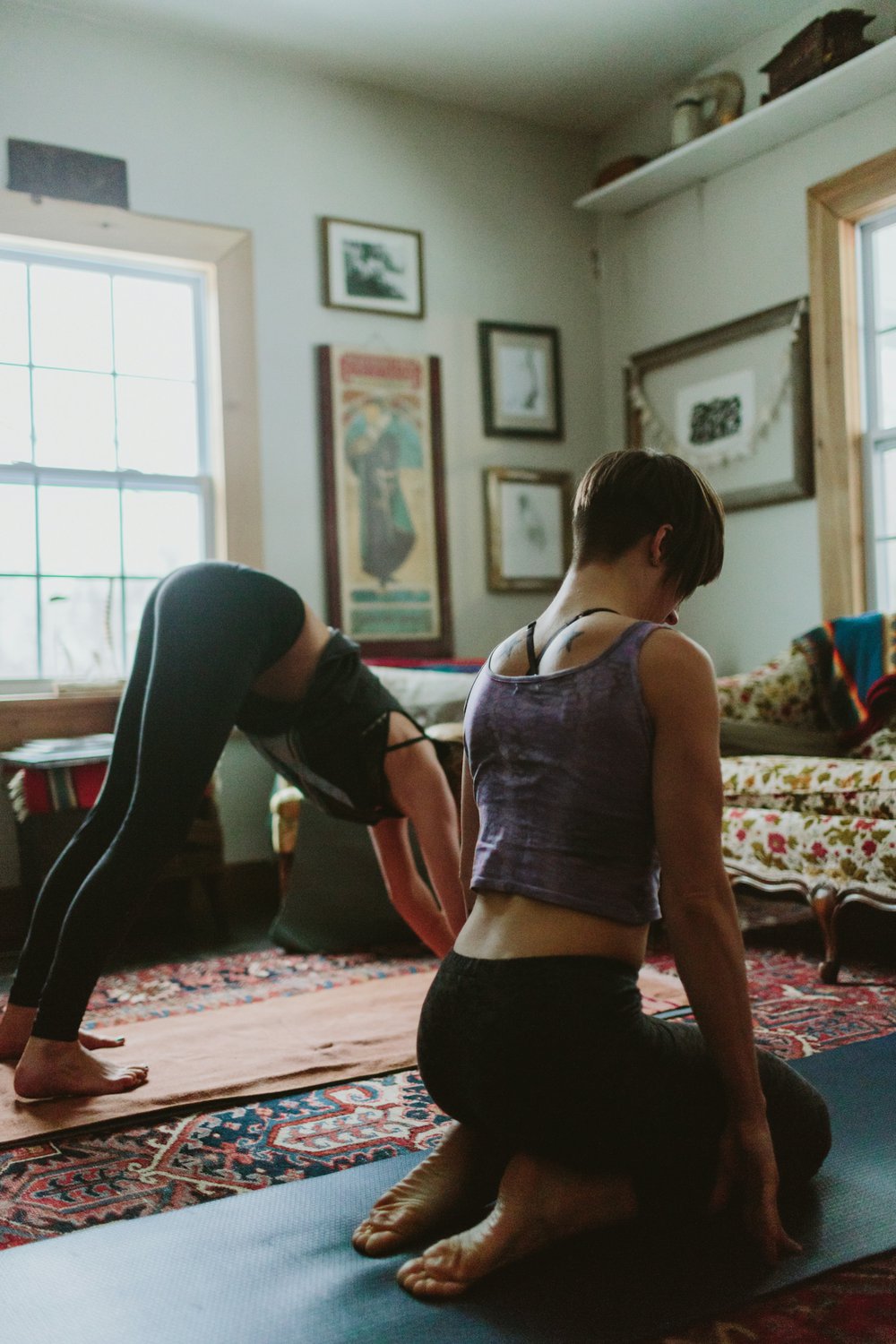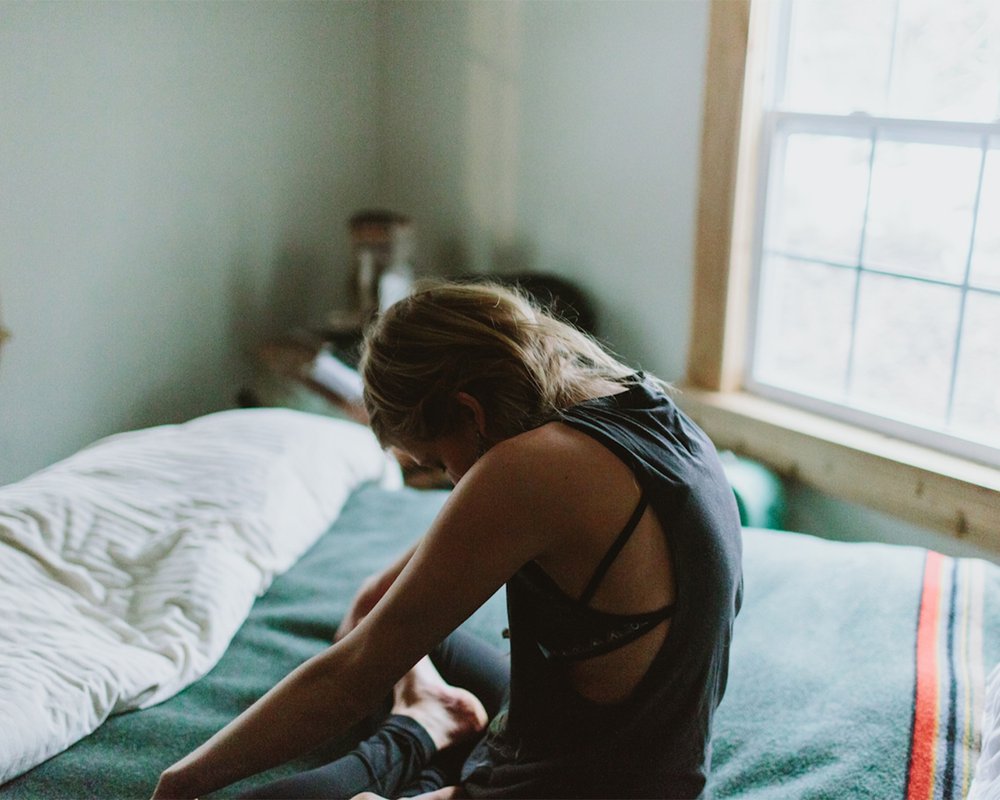April 24, 2024
Unlocking Better Sleep Using Sleep Hygiene
A Comprehensive Guide to Building Better Sleep Habits
Having a tough time falling asleep? The reality is, falling asleep, sleep duration, and sleep quality are all very common problems.
In fact:
- Half of adults have trouble sleeping.
- One in five doesn't find their sleep refreshing.
- One in three finds it hard to stay awake during the day.
To top it off women often experience more insomnia and other sleep issues than men, indicating a gender-based risk. The Mayo Clinic states that hormonal shifts, like those during pregnancy or menopause, can interrupt sleep, leading to insomnia.
Though many struggle with poor sleep, it doesn't mean it's normal or something to ignore. The reality is, lack of sleep can lead to significant health problems, from cognitive decline to increased stress levels. Good sleep is fundamental to our wellbeing, affecting everything from our mental clarity to our physical health.
The good news is, science provides us with practical strategies through sleep hygiene that you can implement as soon as tonight.
As an online yoga studio, we also like to focus on habit or ritual building, as we know it takes time and practice to make changes. For this reason, we created a three-week guide to help you build a sleep ritual that works for you but is grounded in science.
Insomnia Vs Sleep Loss
Before we start talking about sleep hygiene, it is important to address the tired elephant in the room, insomnia. Though sleep hygiene is an aspect of helping this condition, it is only one aspect of it. You may want to sspeak with your doctor about getting extra help.
Insomnia, a common sleep issue, affects about one third of all adults. Chronic insomnia means not getting enough sleep (even when you have the chance to) for at least three nights a week for three months or more. This lack of sleep also has negative effects during the day. For most people, insomnia doesn't last long. But for about 10% to 15% of people with insomnia (around 30 million people), it becomes a long-term problem. Though there are medications that can treat insomnia, most experts now advise against using these drugs for a long time.
“If a person has been diagnosed with chronic insomnia, the only treatment that has been shown to have long-term benefit is cognitive behavioral therapy “ — Dr. Kushida.
Cognitive behavioral therapy (CBT) helps about 70% to 80% of people with long-term sleep problems. This method lowers mental and physical stress. Medicines can help short-term sleep problems. But, they can cause issues when short-term sleep problems become long-term.
What is Sleep Hygiene?
Sleep hygiene refers to the collection of habits and practices that facilitate consistently good sleep. It isn't one thing that will help you fall asleep faster, but rather a series of actions or habits. That's also why we encourage you to view this as a habit-building exercise. Over time, you will fine-tune it, get used to the rules that work for you, and discover what makes the biggest difference for you.
What are the core principles of good sleep hygiene?
- Consistency: Stick to a regular sleep schedule. Go to bed and wake up at the same time every day, even on weekends.
- Optimal Environment: Create a bedroom environment that is conducive to sleep. This typically means cool, quiet, and dark. Consider using blackout curtains, eye masks, earplugs, and "white noise" machines if necessary.
- Comfortable Bedding: Invest in a comfortable mattress and pillows. The quality of your bedding can significantly affect how well you sleep.
- Limit Evening Stimulants: Avoid consuming caffeine, nicotine, and other stimulants several hours before bedtime as they can interfere with your ability to fall asleep. More on this below, as you may be getting sneaky caffeine and not realize it.
- Evening Routine: Establish a relaxing pre-sleep routine to help the body wind down. This could include reading, taking a warm bath, meditation, or gentle stretches.
- Avoid Heavy Meals and Large Fluid Intakes: Eating a large meal before bedtime can lead to discomfort and indigestion. Drinking too many fluids in the evening can lead to frequent awakenings to go to the bathroom.
- Limit Screen Time: The blue light emitted by phones, tablets, and computers can interfere with your circadian rhythm and melatonin production, making it harder to fall asleep. Try to avoid these screens for at least an hour before bed. The circadian rhythm, often referred to as the "body clock," is a natural, internal system that's designed to regulate feelings of sleepiness and wakefulness over a 24-hour period. This rhythm is driven by an internal clock located in the brain and is primarily influenced by external cues like light and darkness.
- Daytime Naps: If necessary, keep naps short and avoid taking them late in the day as they can disrupt your nighttime sleep schedule.
- Physical Activity: Regular physical activity can help you fall asleep faster and enjoy deeper sleep, but try not to exercise right before bed as it can be stimulating.
- Mind Your Mental Health: Stress and anxiety can play a significant role in sleep quality. Consider practices that can help manage stress, like mindfulness or talking to a therapist.

How to Practice Sleep Hygiene
As mentioned above, sleep hygiene isn't just one thing, but rather a combination of actions and habits. To help you understand what changes you can make to improve your sleep, we've divided the practice into three weeks. This is designed to guide you towards a sleep ritual that you can maintain. At any time, you can start with week one again, and repeat the process until you have made the changes you personally need.
Don't forget, we have a free Sleep Hygiene Worksheet to help you with this process. You can print it off, check off the days as you progress, and track what works and what doesn't for you.
Week 1: Foundation and Awareness
Week one is all about noticing your habits and pinpointing those that could be interfering with your sleep quality. For the purpose of building this practice, we recommend keeping a sleep journal to record your observations.
All Week: Spend 1-2 minutes each night writing down which actions you liked, what you learned, any problems you had, and anything that might impact your sleep. You'll look over this at the end of the week.

Unlock our free 21-day Sleep Hygiene Program now! This comprehensive guide is designed to help you build healthier sleep habits step-by-step. Download and start your journey to a night of better sleep tonight.
Freebie will be delivered to your inbox.
Day 1: Note Your Current Habits and Patterns
Action: Reflect on or record your bedtime, wake-up time, and any instances of waking up during the night. We recommend starting a sleep journal for this practice.
Ask yourself:
- What time do I usually go to sleep?
- What time do I normally wake up?
- How often, and what, wakes me up during the night?
- Do I have different sleep and wakes times during the week? Why? Ex: you stay up late Friday and sleep in Saturday.
Day 2: Set a Sleep Schedule & Calculate Your Bedtime
Action: Establish a consistent bedtime and wake-up time to stick to daily, including weekends. Consistency is key, as research supports this practice.
Most of us have morning commitments, like work or school, that dictate when we need to start our day. Knowing this, let’s work backwards to pick your sleep schedule.
Ask yourself:
Identify Your Wake Time: What are my commitments, and how do they influence my wake-up time?
- Start by determining the time you need to be awake. Then, work backward to set an ideal bedtime that allows for the recommended seven to nine hours of sleep, as suggested by the National Institutes of Health.
- Use a sleep calculator to help pinpoint the best times to go to bed and wake up based on your specific schedule.
Adjust According to Your Chronotype: How does my preferred sleep time align with my natural inclinations—am I a night owl or an early bird?
- If your schedule allows more flexibility, tailor your sleep times to align with your sleep chronotype. Night owls, for instance, might prefer going to bed late and waking up later, while early birds might choose to retire and rise earlier.
Do I sleep differently on weekends compared to weekdays? Why is this so and how can it change the quality of my sleep?
What is a chronotype?
A chronotype refers when you naturally feel ready for sleep and wake up. It factors in when you naturally feel the most energetic or focused during a 24-hour period.
Also known as your diurnal preference, your chronotype, impacts all sorts of things about your day, including:
- when exercise feels good
- when feel most focused for work or creativity
- when you feel hungry
- when you energy slumps happen
Imagine this - If you had no duties, tasks, or chores for a week, what time would you choose to sleep and wake up? When would you choose to do the things you really want to do?
What are the chronotypes:
- Bear: Bears are like the sun—they're awake and energetic during the day and sleepy at night. They're at their best in late morning and slow down in the afternoon.
- Lion: Lions are early birds. They love the morning, have lots of energy, and go to bed early, around 9 or 10 p.m. They get the hard stuff done before lunch and relax in the afternoon.
- Wolf: Wolves aren't morning fans. They like to wake up around noon. They feel awake and do their best work in the late afternoon and early evening, peaking around 6 p.m.
- Dolphin: Dolphins have a hard time sticking to a regular sleep schedule and are easily woken up. They're most alert late in the morning and early afternoon but struggle to sleep at night.

Day 3: Mimic the Sun Setting
Pretend it's sunset to get ready for sleep.
Action: About an hour before bed, lower the lights, stop using screens, and begin to relax with activities like reading or listening to soothing music or try a gentle yoga practice or meditation.
Day 4: Make Your Bedroom Sleep-Friendly—Ensure your room is cool, quiet, and dark.
Making a sleep space that's cool, dark, and quiet is important. It helps your body clock match your sleep time, making it easier to fall asleep and improving your sleep quality. Less light and noise means fewer interruptions, so your body can reach deep, refreshing sleep stages. Also, a cooler room helps your body's temperature drop, which makes you feel sleepy.
Action: Adjust your bedroom to match ideal sleeping conditions.
- Keep it Cool: Maintain a cool room temperature. Research indicates that sleeping in a cooler room improves sleep quality. Our body temperature naturally decreases during sleep, and a cool room facilitates this process. Studies link body temperature to sleep patterns. A cool room promotes the temperature drop required for initiating and deepening sleep, leading to fewer night-time awakenings.
- Block Out Light: Use blackout curtains or a sleep mask to ensure darkness, signaling to your body that it’s time to wind down.
- Minimize Noise: Consider a white noise machine or earplugs if ambient noise disrupts your sleep.
Day 5: Mindful Eating and Drinking
Avoid caffeine and heavy meals close to bedtime.
Action: Watch what you eat and drink. Be mindful of your coffee intake and when you eat to help your sleep.
- Check for Hidden Caffeine: Caffeine is in more than just coffee. It's also in things like chocolate, some teas, energy drinks, some painkillers, and weight loss supplements. Even decaf coffee has a little bit of caffeine. Always check labels and ingredients to avoid caffeine before bedtime.
- Understand Caffeine Duration: Caffeine can stay in your system for 3 to 7 hours. This means it could still be in your body for 6 to 14 hours after you drink it. This may affect how well you sleep, depending on how your body reacts to it. Try to only have caffeine in the morning, especially if you have trouble sleeping.
Day 6: Gentle Yoga and Meditation—If you haven't already incorporated gentle yoga or meditation before bed, try it today. Avoid vigorous workouts right before sleep.
Action: Practice!
Not sure what to do? Try this free class and learn a great way to relax before bed:
Day 7: Reflection and Adjustment
Action: Review your sleep diary. Ask yourself:
- Which bedtime rituals and environment helped?
- Did you struggle with any?
- What can you adjust for next week to improve on this week?
Week Two: Deepening Sleep Hygiene Practices
This week, we continue to align our activities with our body's natural sleep-wake cycle, enhancing our understanding of and adherence to good sleep hygiene. Let's make the most of our natural circadian rhythms for better sleep.
Day 1: Morning Sunlight Exposure
Action: Start your day by getting 5-10 minutes of morning sunlight exposure within 30-60 minutes of waking up. This could be as simple as enjoying your morning tea on the porch or taking a quick walk around the block. This brief exposure to natural light helps reset your circadian clock, promoting wakefulness early in the day and better sleep at night.
Day 2: Daylight Engagement
Action: Reflect on last week’s effort to determine your chronotype and today, make a conscious effort to get natural light exposure throughout your day, especially if you spend most of your time indoors. Consider taking short walks during breaks to help regulate your internal clock.
Day 3: Reducing Stimulants
Action: It can be tough to cut back on stimulants like caffeine, which we often use to counteract daytime sleepiness. However, this can create a cycle where stimulants also prevent us from falling asleep, perpetuating the need for them the next day. Challenge yourself to gradually reduce your intake and notice any changes in your sleep quality and daytime energy levels.
Day 4: Extend Your Pre-Sleep Ritual
Action: Work towards extending your pre-sleep ritual to up to two hours before bed. This doesn’t mean you have to sit in darkness; instead, you could play a board game with your family, take a relaxing bath, practice gentle yoga, or read. Lower the lights in your home to create a calming atmosphere that signals to your body it's time to wind down.
Day 5: Reassess Your Sleep Environment
Action: A week ago, you set out to make your bedroom ideal for sleeping. Today, assess any elements you might not have fully addressed. Is your room cool enough? If not, consider adding a fan not just for cooling but also for white noise. If you missed picking up earplugs or other items to help block out noise or light, now might be the time to do so.
Day 6: Practice Breathing Techniques for Better Sleep
Action: Tonight, integrate breathing exercises into your pre-sleep routine. These techniques help activate your body's natural relaxation response and prepare you for deep sleep.Let’s explore three effective breathing techniques:
- Box Breathing
- How to Do It: Breathe in for a count of four, hold your breath for a count of four, exhale for a count of four, and then hold again for four. Repeat this pattern for several minutes.
- Benefits: This technique, also known as square breathing, is great for concentration and focus, helping to clear the mind before sleep.
- 3-7-8 Technique
- How to Do It: Breathe in through your nose for a count of three, hold your breath for a count of seven, and then exhale slowly through your mouth for a count of eight. Repeat for several rounds.
- Benefits: This method is particularly effective in reducing anxiety and helping you unwind from the day's stresses.
- Belly Breathing
- How to Do It: Place one hand on your belly and the other on your chest. Inhale deeply through your nose, ensuring your diaphragm inflates and feel your belly rise under your hand. Slowly exhale through pursed lips. Repeat for a few breaths.
- Benefits: Belly breathing improves oxygen exchange and is very relaxing, making it especially useful right before sleep.
Day 7: Reflect and Adjust
Action: Review your sleep journal. Note what’s working and what isn’t. Are there adjustments you can make to improve your sleep quality? Plan these changes for the upcoming week.
Need extra guidance for meditation and mindfulness? Try our 7-day free trial and start practice tonight:

Week 3: Integrating Breathing Exercises into Sleep Hygiene
This week, is about trying different breathing techniques at night to help you relax and sleep better. They goal is to ‘stack’ one style into your nightly routine and become a tool in your day to reduce stress, which also can lead to loosing sleep.
Day 1: Practice Box Breathing
- Action: Start your evening routine with 5 minutes of box breathing. This exercise helps to calm the mind and body, setting the stage for a restful night.
- How to Do It: Breathe in for a count of four, hold for four, exhale for four, and hold again for four. Repeat this sequence for several minutes.
Day 2: Practice 3-7-8 Breathing
- Action: Incorporate the 3-7-8 breathing technique into your pre-sleep ritual, either sitting up or lying down.
- How to Do It: Inhale through your nose for three seconds, hold your breath for seven seconds, and exhale slowly through your mouth for eight seconds. Repeat for a few cycles.
Day 3: Explore Belly Breathing
- Action: Try belly breathing tonight once you're in bed and the lights are dimmed or off, to help deepen your relaxation.
- How to Do It: Place one hand on your belly, the other on your chest. Breathe deeply through your nose, feeling your belly rise, and exhale slowly through pursed lips.
Day 4: Extend Your Favourite Technique
- Action: Choose the breathing technique that felt most relaxing over the past few days. Aim to extend your practice tonight, possibly up to 10 minutes.
- How to Do It: Engage in the chosen breathing exercise, gradually increasing your time spent as comfort allows.
Day 5: Daytime Breathing Practice
- Action: Apply a breathing technique during a stressful daytime moment to manage stress, which impacts sleep quality.
- How to Do It: At a red light or before responding to a stressful email, perform your preferred breathing exercise. Notice if it helps reduce your stress in the moment.
Day 6: Establish a Routine
- Action: Commit to 10 minutes of your chosen breathing technique as part of your nightly routine.
- How to Do It: You can practice this while sitting quietly, during a bath, or as you begin to dim the lights for the evening.
Day 7: Stack Your Breathing Habit
- Action: Combine tonight's breathing practice with another relaxation technique you enjoy.
- How to Do It: Follow your breathing exercise with a gentle yoga session, while preparing tea, or during your nightly skincare routine. Turn these moments into a comprehensive wind-down ritual.
Done your three weeks, unsure what to do next?
You can start again at the top, always working towards your perfect sleep ritual.
Remember the core principles:
- Consistent sleep schedule.
- Your sleep environment matters, focus on: cool, quiet, and dark.
- Limit stimulants like caffeine, nicotine well before bed, and consider reducing them overall during your day.
- Establish a relaxing pre-sleep routine to help the body wind down. This could include reading, taking a warm bath, meditation, or gentle stretches.
- Avoid large meals before bed that can cause discomfort and indigestion. Drinking too many fluids in the evening can lead to frequent awakenings to go to the bathroom.
- Limit your screen time. As relaxing as scrolling may feel the blue light emitted by phones, tablets, and computers can interfere with your circadian rhythm and melatonin production, making it harder to fall asleep. Try to avoid these screens for at least an hour before bed.
Sleep Program
Do you prefer a plug-and-play method for better sleep? Our members have access to our Sleep Program, designed to reduce stress, prepare your body for sleep, and promote peaceful slumber. Try a 7-day free trial and cancel anytime.


